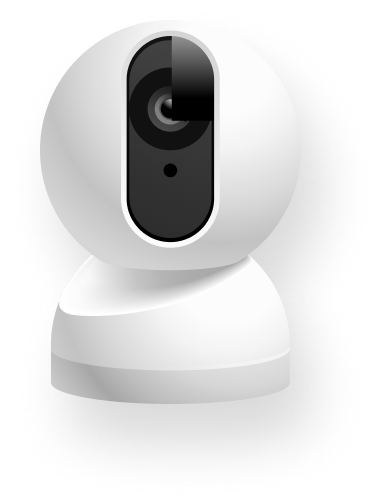You might be researching security cameras, or perhaps you are disappointed with the zoom on your existing security cameras. Many consumer-grade security cameras advertise that they have a “zoom” feature, where you can zoom in and see faces and license plates better. This “zoom” is nearly always digital, which isn’t particularly useful on most consumer-grade security cameras operating at 1080p. To zoom in to an object and see it clearer than you did before, you need optical zoom.
This article will highlight the differences between digital zoom and optical zoom, using real-world examples.
What is Digital Zoom on Security Cameras?
You might have already used digital zoom, where you zoomed into a picture you had already taken on your smartphone. You see the centre of the photograph larger but not clearer.
Every security camera has digital zoom, even ones with optical zoom. However, not every camera has an optical zoom.
The benefit of digital zoom is you can zoom after the footage has been recorded, but only to an extent.
A single frame on security footage comprises millions of pixels like a mosaic; when you zoom digitally, you see these pixels become larger. If you zoom in too much, you will eventually see a blocky appearance and “stepping” on the edges of objects.
Example of excessive digital zooming and not gaining any extra detail:
Example of Digital Zoom
In the picture below, I am holding a number plate 17 metres away using a 4 Megapixel camera. The number is too small to be readable.
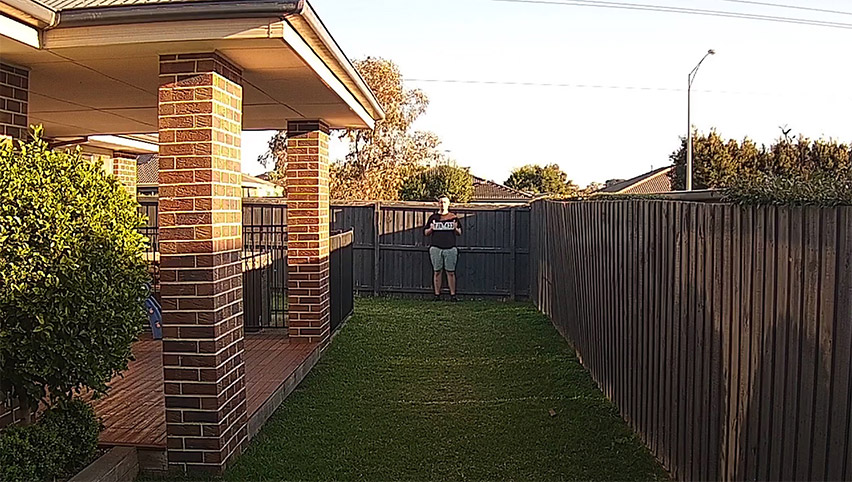
This is the same picture zoomed in using Digital Zoom.
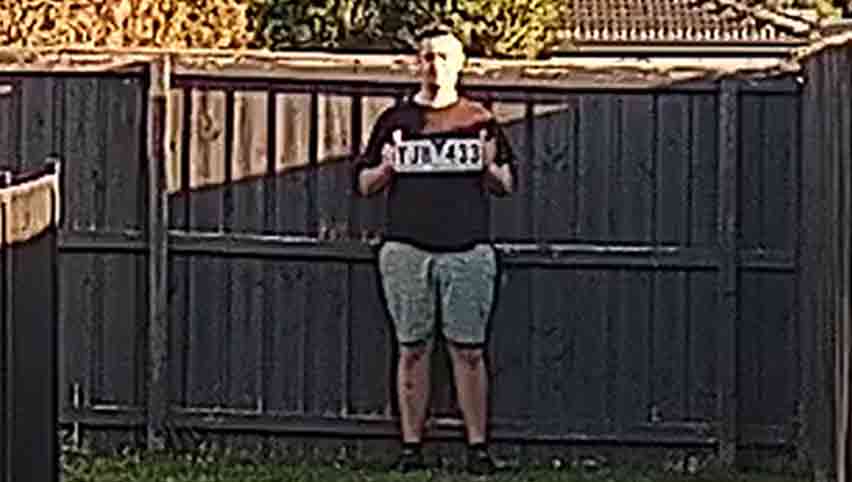
We haven’t gained any extra clarity of the number plate letters; it’s just a bigger picture to view. The number plate might read “TJM 433”, but it’s hard to be sure on the first three characters.
Unlike the crime shows, there is no “Enhance!” option. We can’t add any extra information that wasn’t already in the picture.
We can view what was already captured larger, which we just did between the first and second picture, but we can’t gain any extra detail.
That is the limitation of digital zoom, and often where people are disappointed with their cameras. Many cameras manufacturers imply that you can gain extra clarity with the zoom, but they don’t make it obvious whether it is digital or optical. It is usually digital, especially in consumer-grade cameras.
Adding More Megapixels for Better Digital Zoom
To zoom in digitally further, we can capture more information using a higher resolution security camera.
Most consumer-level security cameras have a resolution of 2 Megapixels which is 1080p. If you have a 4 Megapixel camera (2K), you have twice as many pixels as a 2 Megapixel camera, which means you can zoom in twice as much before it looks like a 2MP camera.If you get an 8 Megapixel camera (4K), you have four times the number of pixels as a 2MP camera, allowing you to zoom in four times before it looks like a 2MP camera.
In the video below, we are now using an 8MP (4K) camera to use digital zoom on.
As you can see, we captured enough detail with a higher resolution to read the number plate.
What is Optical Zoom on Security Cameras?
Optical zoom is where glass lenses move closer to the sensor to increase magnification. You might have used optical zoom before if you have twisted the knob on a pair of binoculars. When you turn the knob, you move a glass lens closer or further away from your eye, which changes the magnification.
The distance of the lens to the sensor is measured in Millimetres, with more millimetres being more zoomed in.
Example of Optical Zoom
The camera we used for these examples is a Vari-focal camera, so it can move the lenses using small motors inside it and zoom in optically.
In the same scene, we are going to use optical zoom from 2.7 millimetres to 12 millimetres.
Here is an illustration from a top-down perspective of what is happening between the 2.7mm and the 12mm lens.
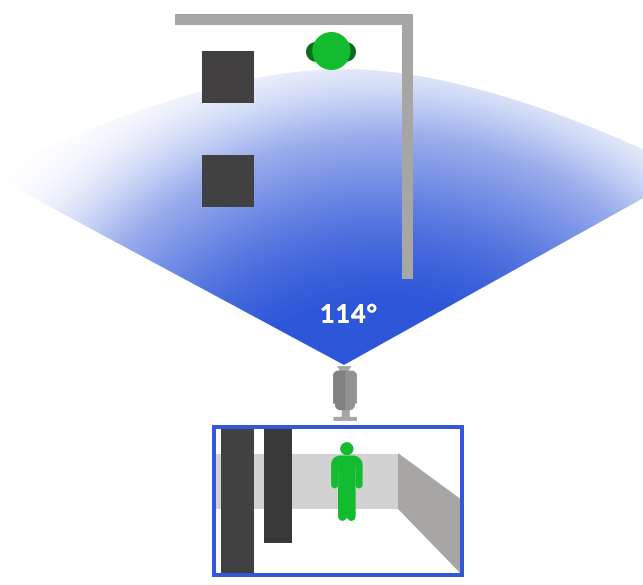
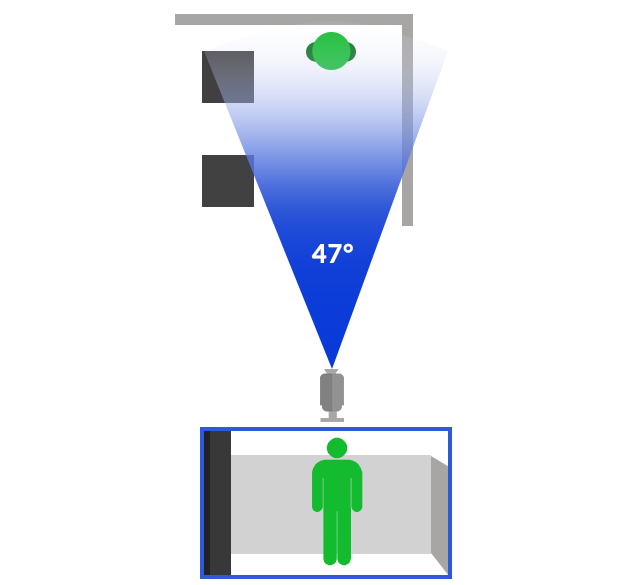
Now we can actually read the number plate. Previously, it looked like the first three letters were TJM, but now we can easily read it as “YJH”.
Like a pair of binoculars, the lenses “get us closer” to the object so we can see the details better.
One thing to remember is that even if you have Optical Zoom on your security camera, you can’t zoom in optically after the footage has been recorded, only before. After the footage has been recorded you can only use digital zoom.
Buying Security Cameras with Optical Zoom: Vari-focal vs Fixed Lens
Vari-Focal Cameras
In the example above, we used a vari-focal camera to move the lens further away from the camera sensor using tiny motors.
The benefit of a Vari-focal camera is:
- You have a lot of flexibility whether you want to see a non-zoomed-in wide-angle field of view or a zoomed-in narrow field of view.
The disadvantage of a Vari-focal camera is:
- Higher cost
- Larger camera size to accommodate lenses and motors.
Fixed Lens Cameras
A fixed lens camera cannot zoom in or out optically. The zoom level you buy is the zoom level it remains. You can generally buy security cameras with 2.8mm, 3.6mm, 6mm, 8mm, and 12 mm lenses (higher being further zoomed in).
You would typically use a fixed lens camera to watch an object at a distance that doesn’t change, your front gate across the yard, for example.
The benefit of a Fixed Lens Camera is:
- Watch an object with greater magnification
- Lower cost than a Vari-focal lens
The disadvantage of a Fixed Lens Camera is:
- You can’t change the zoom.
Should I Buy a Higher Resolution Camera or Have More Optical Zoom?
You will get a better picture with more optical zoom. The problem with higher resolution cameras like an 8MP (4K) camera is that they perform worse at night than lower-resolution cameras.
I highly recommend getting a security installer to help you make the best choice for the position you want to cover with a security camera.
A security installer will often choose a fixed-lens camera with the right optical zoom for the location, saving you money and getting the best view possible within your budget.
